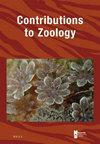A bionomic overview of spider parasitoids and pseudo-parasitoids of the ichneumonid wasp subfamily Pimplinae
IF 2.1
2区 生物学
Q1 ZOOLOGY
引用次数: 0
Abstract
The parasitoid way of life (parasitizing and finally killing a single arthropod host) is one of the most successful lifeways in the animal kingdom, sparking an explosive diversification and accompanying numerous parasitoid strategies in insects, especially in the order Hymenoptera. Amongst parasitoid wasps, the Polysphincta group of genera has evolved a highly distinctive parasitoid mode of life, as solitary koinobiont ectoparasitoids of spiders (Chelicerata: Araneae). Some species of polysphinctine wasps have a remarkable ability to control spiders’ web-building behaviour (host web manipulation) to protect the vulnerable wasp cocoons. The group currently consists of 25 genera and 294 extant species worldwide, with 14 genera known to manipulate their host spiders. This study reviews the current species composition, distribution, host utilization and biology of all genera belonging to the Polysphincta group and their ancestral genera of spider egg mass pseudo-parasitoids, highlighting specific offensive approaches for subjugating spider hosts for oviposition and web manipulation against specific spider hosts. There must still be many more unique behaviours to be discovered, given that the life histories of several polysphinctine genera are poorly known or unknown. A tidy correspondence between lineages of polysphinctines and host spiders was recognized, implying the evolutionary history of polysphinctines. Based on the integrated information on behavioural data and host utilization, we suggest some hypotheses determining triggers for host shifts and discuss the possibility of adaptive radiation driven by divergent natural selection on host differentiation. One new taxonomic change is proposed: Zaglyptus idukkiensis (Manjusha, Sudheer & Ghosh, 2019), comb. nov., is transferred from Polysphincta.姬蜂亚科蜘蛛寄生虫和假寄生虫的仿生学概述
寄生生活方式(寄生并最终杀死单一节肢动物宿主)是动物界最成功的生活方式之一,它引发了昆虫的爆炸性多样化,并伴随着众多寄生策略,尤其是在膜翅目昆虫中。在寄生蜂中,多鞘翅目(Polysphincta)蜂属进化出了一种非常独特的寄生生活方式,即蜘蛛(螯足目:Araneae)的单生共生外寄生蜂。某些种类的多鞘蜂具有控制蜘蛛结网行为(操纵寄主网)以保护脆弱的蜂茧的非凡能力。该类目前在全球有 25 个属,294 个现存物种,其中 14 个属已知能操纵寄主蜘蛛。本研究回顾了属于多棘蛛属的所有属及其蜘蛛卵块伪寄生虫祖先属目前的物种组成、分布、寄主利用和生物学特性,重点介绍了征服蜘蛛寄主进行产卵和操纵蜘蛛网以对付特定蜘蛛寄主的具体进攻方法。鉴于对一些多鞘翅目属的生活史知之甚少或一无所知,肯定还有更多的独特行为有待发现。多鳞翅目和寄主蜘蛛之间的对应关系被确认,这意味着多鳞翅目的进化历史。根据行为数据和宿主利用的综合信息,我们提出了一些决定宿主转移触发因素的假说,并讨论了宿主分化过程中不同自然选择驱动的适应性辐射的可能性。我们提出了一个新的分类变化:Zaglyptus idukkiensis (Manjusha, Sudheer & Ghosh, 2019), comb.
本文章由计算机程序翻译,如有差异,请以英文原文为准。
求助全文
约1分钟内获得全文
求助全文
来源期刊

Contributions to Zoology
生物-动物学
CiteScore
4.00
自引率
4.50%
发文量
16
审稿时长
>12 weeks
期刊介绍:
Contributions to Zoology solicits high-quality papers in all systematics-related branches of comparative zoology (including paleozoology). Preference will be given to manuscripts dealing with conceptual issues and to integrative papers (e.g., ecology and biodiversity, morphology and phylogeny and character state evolution, phylogeny and historical biogeography, systematics and bioinformatics, bioinformatics and biodiversity, habitat disturbance and biogeography, etc.). Reviews and alpha-taxonomic contributions are considered for publication, but acceptance will depend on their high quality and exceptional nature.
 求助内容:
求助内容: 应助结果提醒方式:
应助结果提醒方式:


